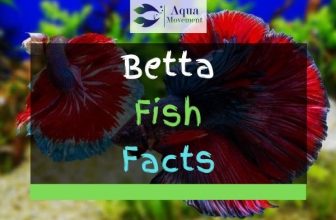How to get rid of Green Water in Fish Tank
Aquarium water can turn green almost overnight. The murky color isn’t a pretty sight and blocks all the fish.
Most often, the green water situation can be reversed.
We happened to know a few tips and tricks that could help you, and in the following sections, we’ll show you how to get rid of green water in fish tank.
We’ll also look closely at the causes and best ways for prevention.
Table of Contents
Why Is the Aquarium Water Green?
Green water isn’t dangerous in most cases, it’s usually caused by algae. This is also abundant in nature, and fish don’t seem to mind it much.
Several species find it good food and a nice part of their environment. A Daphnia is one of these organisms.
The green color that keeps spreading on a daily basis is the result of a microorganism feeling happy.
Phytoplankton are a kind of algae. Phytoplankton is too small to be seen by the naked eye, but it’s quite visible if you magnify a drop of green water.
The green color becomes obvious when phytoplankton increase in numbers. It gets darker as the algae population multiplies.
Does it Harm Your Fish?
Algae bloom is something we see in ponds and around waterways. It’s not harmful most of the time, and many aquatic creatures see it as delicious food.
Having a green tank might not affect your fish right away, but it points to an imbalance. The perfect tank should have crystal clear water, and when that changes, usually, something is off.
The thick algae surface and surging population might also affect the oxygen content of the water. Less oxygen would be harmful to your fish.
The murkiness of water is often associated with higher-than-normal levels of carbon dioxide, ammonia, and nitrates. It also comes with excessive light, over-feeding, and fish crowding.
A poorly maintained fish-tank accumulates high levels of the above-mentioned chemicals and organic substances.
All these are situations that need to be changed to keep your fish healthy and happy.
What Are the Causes of Green Water in Fish Tank?
Phytoplankton multiply when the surrounding conditions of their environment become convenient.
They have the basic needs of most creatures. Plankton is in a constant search of nice food, good surroundings, and a luxurious ambiance.
How does it find all that in your aquarium?
Extra Fish Food
Phytoplankton Algae feeds on chemical nutrients and organic compounds. Decomposing fish food provides algae with plenty of nitrogen and phosphorous.
The richness of the aquarium water with food sources invites algae activity. It’s a lot like kids in a candy store.
Surplus Plant Nutrients
Plant nutrients help your aquarium plants look great. We know that a wilted plant can be seriously unsightly, and that’s why many aquarium owners use generous amounts of plant stimulants.
Plants only use the nutrients they need. The rest is left as a floating feast for phytoplanktons. They’ll procreate happily as long as these treats abound.
Too Much Light
Phytoplankton Algae behaves pretty much like a plant. Light is a stimulant for it to grow and increase in number.
Natural sunlight is a gift for algae. Your aquarium will often turn green if it’s placed too close to a window. Artificial aquarium light has a similar effect when it’s constantly turned on.
Too Many Fish
Carbon dioxide is one of the phytoplankton’s favorite compounds. It tends to go up when you have a bustling aquarium.
The abundance of carbon dioxide is an optimal ambiance for algae, and the water will soon turn green.
A crowded aquarium also means more excrement. This is also favorable for algae.
Infrequent Water Changes
The cumulative effect of decaying food, fish excrement, plant nutrients, and dissolved carbon dioxide is a spa for phytoplankton.
These organic materials cling to the gravel and the sides of the aquarium after a while. The little changes in the aquarium water can easily pile up.
Standing water provides an optimal growing environment for algae. The water turning green is just a matter of time in these situations.
How to Prevent Green Water in Fish Tank?

An ounce of prevention is worth a pound of cure’. You must’ve heard this saying a hundred times already, that’s because it’s true!
Here’s what you can do to prevent your aquarium water from turning green.
Change Aquarium Water Frequently
A well-maintained aquarium rarely gets algae water. The frequent cleaning and water changes remove most of the substances the algae feed on.
Changing water also regulates the percentage of dissolved gases. Lowering the amount of carbon dioxide
Clean the sides of the aquarium and gravel each time you change the water; this also enhances the water quality and minimizes the possibility of algae growth.
Control Aquarium Light
Direct sunlight encourages phytoplankton growth. This alga behaves like a plant and flourishes when it finds that much light.
Moving the aquarium away from the window discourages algae growth. Artificial light also stimulates phytoplankton, so you need to turn it off as much as possible.
Make sure that these precautions don’t harm your aquarium plants. That’s why we recommend ‘control’ rather than a total cut-off of light.
Don’t Overcrowd Your Aquarium
Keep the fish population from exceeding the capacity of your aquarium. They breathe, eat, and produce various wastes. All these organic substances create the perfect ambiance for algae.
Fish breed and their numbers and sizes increase. It’s advisable then to have a bigger aquarium, a second aquarium, or to give some fish as gifts.
How to get rid of Green Water in Fish Tank
There are many ways to clear green water. We tend to use eco-friendly products, as they clear up the murky water issue while keeping the fish safe.
Here are some effective remedies for green aquarium water:
Install a UV Sterilizer
[amazon box=”B008ADUVWQ”]
A UV sterilizer sorts out the phytoplankton problem within a few days. It wouldn’t hurt the other fish or plants in the aquarium, which is a big plus.
The principle of UV sterilization is simple: water passes through the device and a special light bulb subjects it to a heavy dose of UV radiation.
The UV light is similar to being under harsh direct sunlight. It tends to toast the cells. This is annoying for the bigger species like humans. It’s fatal though for the tiny creatures like phytoplankton and some bacteria.
The aquarium clears up after a few days of using a UV sterilizer. You can also leave it on to prevent a recurrence of the algae and keep the water clean.
Video: “Aquarium UV Sterilizer/Filter in Action!”
6 Best Aquarium UV Sterilizer for Freshwater, Saltwater, and Reef Tank
A UV sterilizer usually decreases the need for frequently changing aquarium water. This is one more advantage to installing one.
The downside of using a UV Sterilizer is that it costs money. Routine aquarium clean-ups are cheaper than buying new equipment. The value of a UV Sterilizer is more than justified though if it clears up your aquarium algae problem.
A UV Sterilizer is also a machine. Its parts and components need to be checked regularly. A light bulb or an O-ring might also need to be replaced after a while.
- It’s an effective way to clear your aquarium
- It’s safe to use around the fish and plants
- It can also be used to prevent a recurrence
- It keeps the tank generally clean
- You wouldn’t need to change aquarium water frequently
- It requires installation and powering up
- It’s an extra cost
- It needs maintenance
Use an Aquarium Water Clarifier
[amazon box=”B001D4TNH8″]
There are many commercially available aquarium water clarifiers. Most of them (like the Tetra AlgaeControl) use a simple principle for getting the job done. They clamp the organic matter together. The filter detects that larger size easily and eliminates it.
You can also fish out these visible blotches by hand. These occasional clean-ups are enough to wipe out the algae cloud. It takes a few hours in most cases to return the water to its crystal clear form.
The aquarium water clarifiers are often made for freshwater tanks. You might want to make sure exactly what the label says, and buy a suitable clarifier if you have a different aquarium.
These products are usually affordable, so maintaining your aquarium wouldn’t put a dent in your budget, and they’re easily available online and at pet stores.
Check Price and Reviews on Amazon
- It’s a quick-acting solution
- It’s effective in removing algae
- It’s budget-friendly
- The clearing effects are long-lasting
- It can be repeated safely
- Most products are suitable for freshwater tanks only
- The filter needs changing after applying the cleaner
Some Optional Features for Aquarium Water Clarifiers
- A cap that also doubles as a measuring cup for the correct amount
- Easy to use filter pouches instead of the liquid form
- Universal clearing products that work on all types of water tanks
- Products that also remove ammonia and other nitrate compounds
Conclusion
Green aquarium water is visually annoying. It also points out to a certain imbalance around your tank. It might be caused by too much light, overfeeding, having too many fish, or needing more frequent water changes.
Clearing the problem is easy once you verify it’s caused by phytoplankton algae. You can use a UV sterilizer or an aquarium water clarifier. Both options are great and efficient. They’re also quick-acting, so you’ll get back your crystal clear tank in a few hours.
Prevention is always better than confronting a problem. Try to place your aquarium where the light can be controlled by a curtain, and if you have artificial aquarium light, turn it off occasionally.
Keep your aquarium nice and clean. Change the water regularly, and spruce up the tank and gravel. This alone minimizes the probability of algae growth. Your fish will love you for all this care and attention!




